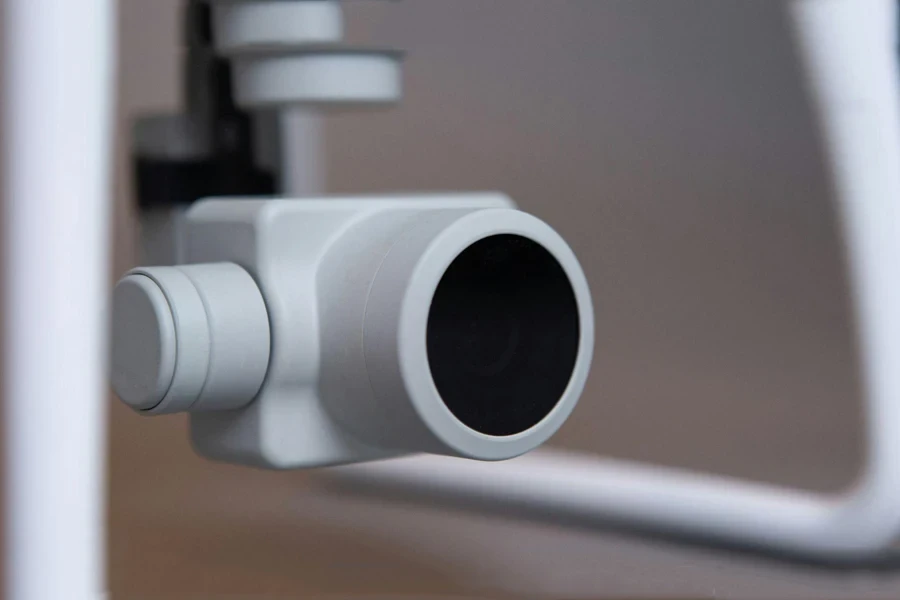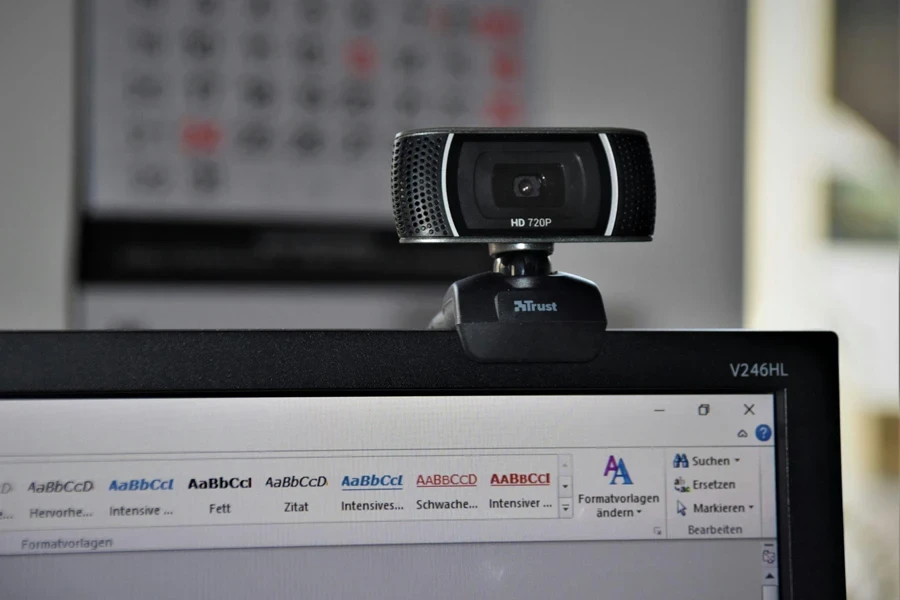Table of Contents
● Introduction
● Market overview
● Things to consider when selecting webcams
● Webcams and their key features
● Conclusion
Introduction
In today’s digitally driven world, the importance of webcams as a critical communication tool cannot be overstated. As the bridge between virtual and face-to-face interactions, webcams facilitate a myriad of activities across various sectors. With the evolution of remote work and digital learning environments, there has been a marked increase in the demand for high-quality video communication solutions. This surge underscores the role of webcams not only in professional spaces like corporate offices but also in educational settings such as virtual classrooms. Webcams play a pivotal role in enhancing interactive experiences, ensuring that whether it’s a high-stakes business meeting, an online class, or a virtual team collaboration, every session is delivered with utmost clarity and precision. The ability of a high-quality webcam to reproduce fine details and maintain color accuracy can significantly transform the quality of virtual interactions, making them more engaging and closely mimicking the nuances of in-person communication. This transformation is crucial as it contributes to more productive and effective meetings and learning sessions.

Market overview
The global webcam market is experiencing robust growth, with its size estimated at USD 7.26 billion in 2021 and projected to expand at a compound annual growth rate (CAGR) of over 7.3% from 2022 to 2030, according to Grand View Research. This significant expansion is fueled by increased demand for real-time monitoring devices and the widespread adoption of unmanned aerial vehicles (UAVs) for security and surveillance purposes. Additionally, the surge in the use of webcams for video conferencing and visual marketing has become crucial in corporate communication, especially in the post-COVID era where remote and hybrid work models are becoming the norm. The integration of webcams into everyday business practices highlights their growing importance in maintaining seamless operational workflows.
In terms of market share distribution, USB webcams currently dominate the market, holding about 60% of the volume share, as detailed by Grand View Research. This dominance is attributed to their compatibility across multiple platforms and their advanced features, such as overheating prevention and flexible placement options, which enhance user convenience. Meanwhile, wireless webcams are anticipated to see a notable increase in market presence, with a projected CAGR of more than 8.0% during the forecast period. Their versatility and higher resolution capabilities cater to a growing demand for superior video quality in both consumer and commercial settings. Recent technological advancements have focused on enhancing digital webcam technologies, offering improved security features such as better data encryption and protection, thus driving continuous innovation in the market.

Things to consider when selecting webcams
Resolution and video quality
High-definition webcams supporting resolutions such as 1080p or 4K are essential in professional and educational environments. Higher resolutions significantly enhance viewer engagement by delivering sharper, clearer images. Visual clarity is particularly crucial in professional contexts where fine details are essential, such as during virtual client meetings or detailed visual presentations. In educational settings, high-resolution webcams greatly impact the effectiveness of remote teaching. Clear visual communication is necessary for demonstrating processes, showing physical documents or objects, and maintaining engagement, especially in subjects that depend heavily on visual cues and detailed graphics. The ability to convey clear and detailed visual information can directly influence learning outcomes, making high-resolution webcams a vital tool.
Autofocus and light correction
Autofocus technology in webcams is essential for maintaining sharp focus on the subject, swiftly adapting to movements within the frame. This feature proves invaluable during dynamic presentations or active teaching sessions, ensuring that the focus automatically adjusts to keep the subject in clear view without manual intervention. Light correction technology enhances video quality under varying lighting conditions. Whether in dimly lit or overly bright environments, light correction adjusts the webcam feed to ensure the video output remains visible and clear. For example, in rooms with strong backlighting where a subject might otherwise appear shadowed, light correction helps balance the exposure to deliver a more uniform and visible image. These technologies together enhance the overall user experience by providing consistently high-quality video, crucial for maintaining professionalism and effectiveness in communication.
Compatibility and connectivity
Compatibility of webcams with various operating systems ensures broad usability across different technological platforms. This aspect is critical for organizations and educational institutions that operate with diverse IT systems, providing seamless integration and functionality. The type of connectivity affects not just ease of use but also performance. Webcams with USB-C connectivity are known for their faster data transfer rates and enhanced power delivery capabilities. These features lead to improved video quality and reduced latency, which is advantageous in professional settings. Faster data transfer ensures that video feeds are smooth and uninterrupted, while better power delivery supports higher-resolution feeds without taxing the resources of the computer. These benefits are essential in high-stakes environments like business meetings or live lectures, where delays or poor video quality can negatively impact communication and viewer experience.
Range of webcams
High-end webcams
High-end webcams are the pinnacle of webcam technology, designed for users who require the utmost in video quality and performance. These webcams typically feature ultra-high resolutions such as 4K, which provide crystal-clear images with exceptional detail. This level of clarity is crucial for professional settings where precision is paramount, such as detailed medical consultations, high-quality live broadcasts, or high-stakes virtual meetings with clients. Moreover, these webcams support high frame rates, often 60 fps or higher, ensuring smooth video playback with minimal motion blur. This is especially important in dynamic environments where quick movements are common. High-end webcams also often include advanced features like HDR (High Dynamic Range) and extensive field of view adjustments, which can be tailored for professional studio setups or expansive conference rooms. These features ensure that video outputs are not only detailed but also color-accurate and wide enough to include multiple participants.
Mid-range webcams
Mid-range webcams are tailored to deliver a solid balance between performance and cost, making them ideal for a wide range of users, from businesses to educational institutions. These webcams usually offer Full HD 1080p resolution, which strikes a good balance between clarity and bandwidth requirements, suitable for standard video conferencing and educational sessions. They are equipped with features such as autofocus, which adjusts the lens to keep the main subject in focus during calls, and light correction technology, which ensures the video remains visible and clear under varied lighting conditions. This category of webcams often includes a decent field of view, typically around 78° to 90°, which is enough to capture one or two people sitting in front of the computer. These webcams are a favorite among professionals and educators who need reliable video quality for daily communications without breaking the bank.
Budget-friendly webcams
Budget-friendly webcams serve the essential needs of users who require basic video communication capabilities. These webcams typically support HD resolutions like 720p or 1080p, providing adequate video quality for casual chats, simple live streaming, or entry-level remote teaching. Although these models may not include high-end features like 4K resolution or very high frame rates, they still offer essential functionalities such as basic autofocus, which helps maintain focus on the subject even if they move slightly during the video call. Light correction might be more basic compared to higher-end models, but it’s usually sufficient for typical home or office environments. Budget-friendly webcams are particularly suited for users who engage in occasional video calls or for organizations like startups or small businesses that require a simple, cost-effective solution for their communication needs.

Conclusion
Choosing the right webcam is crucial for meeting the specific requirements of various professional, educational, and personal communication needs. High-end webcams deliver ultra-high resolutions and frame rates that are essential for professional environments where detail and smooth motion are paramount. These webcams are particularly suited for scenarios requiring top-tier video quality, such as telemedicine, professional broadcasting, or executive meetings. Mid-range webcams, offering a balance of performance and affordability, are ideal for everyday professional and educational use, providing reliable video quality for standard conferencing and teaching. For casual or infrequent users, budget-friendly webcams offer adequate functionality at a more accessible price point, making them suitable for basic personal communication or small organizations. Each category caters to distinct market segments, and understanding the specific features and capabilities of these webcams can significantly enhance the effectiveness of communication.



